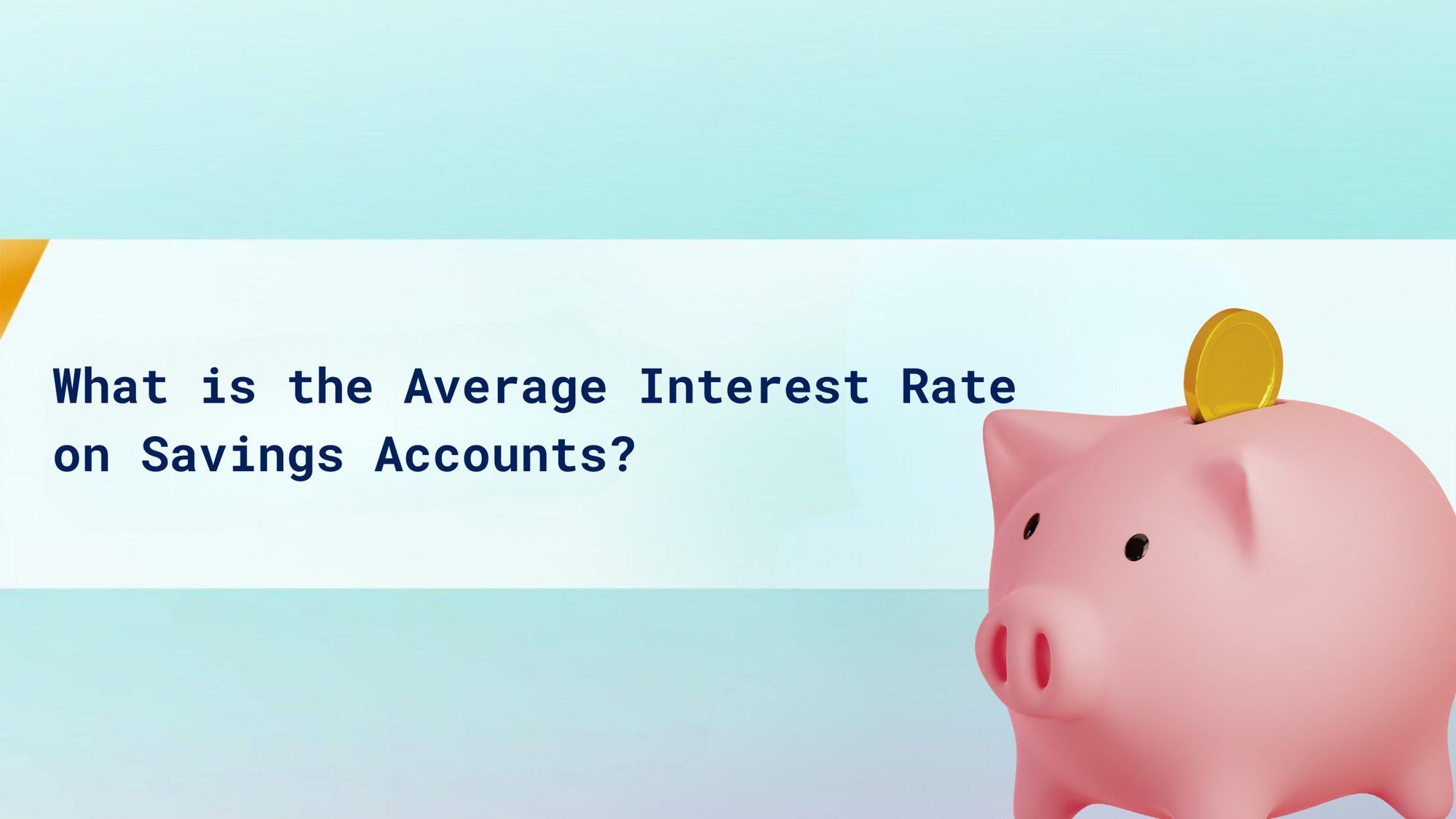
What is the Average Interest Rate on Savings Accounts?
Author Taiwo Temitope-Adesope
Personal finance experts unanimously agree – one of the cornerstones of a healthy financial life is building an emergency savings fund. Having quick access to cash reserves allows you to cover unexpected expenses without accruing debt or raiding your investment accounts. While storing money in a checking account provides liquidity, the meagre interest earnings mean your savings lose purchasing power to inflation over time. This is why opening a high-interest savings account is so critical.
Savings accounts provide a secure way to earn passive income on your deposits while keeping funds accessible for when you need them. Unlike stocks or other assets, savings accounts are extremely low-risk. Your principal deposits remain intact and interest earnings provide a predictable, stable return.
The exact rate of return, however, depends heavily on the underlying interest rates set by central banks. For instance, 2022 saw rapid interest rate hikes that have continued into 2023, leading to jumps in savings account Annual Percentage Yields (APYs). Understanding how these interest rates work is key to maximizing your savings outcomes.
Over the next sections, we’ll explore the fundamentals behind savings account interest rates. We’ll look at recent rate changes, how to choose the right savings account for your needs, and provide actionable tips for growing your money safely and consistently over time through the power of compounding.
The Basics of Savings Account Interest Rates
Savings account interest rates refer to the percentage of interest earned on deposits held in a bank savings account over a set period. This interest accrues daily based on your average daily savings balance and is credited to your account either monthly or quarterly depending on the bank.
Essentially, you earn passive income just by responsibly setting money aside instead of spending it. This provides an incentive to save and builds your net worth gently over time.
In banks, deposited funds are pooled and lent out to other customers at higher interest rates through loans, credit cards, mortgages etc. The profit spread is where banks generate revenue to pay you as passive interest earnings.
Central banks like Nigeria's Central Bank influence savings rates by adjusting key benchmarks known as the Monetary Policy Rate (MPR). Higher MPR signals tighter money supply goals to curb inflation. Banks respond by raising interest rates across products to restrict lending – this flows down to consumers as higher deposit rates.
So, while your personal actions impact how much you save each month, external factors like economic outlook also significantly sway how fast your money can grow.
Current Trends in Savings Account Interest Rates
Over the last year, major central banks increased rates aggressively to combat runaway inflation due to pandemic relief spending and other macroeconomic issues. This has led to a surge in savings account interest rates not seen in over a decade.
For context, since July 2022, Nigeria's Central Bank has raised MPR rapidly from 14% to 17.5% at present. Consequently, average bank savings account rates have shot up from a paltry 2% in 2021 to over 5% and growing as at 2023 based on Money Market indicators.
Consider leading tier-1 banks like Access Bank whose savings APY has ballooned from 4.5% to almost 6%. Or Heritage Bank promoting over 10% returns on savings! This translates into thousands of extra Naira per annum in passive earnings for responsible savers.
The question then becomes – how sustainable is this growth trend? Economic uncertainty including risks of global recession and Nigeria's election cycle could impact future MPR decisions. Regardless, the current high-interest regime offers a rare chance to lock-in solid risk-free returns.
Comparing Savings Account Interest Rates
With savings rates rising across the board, how do you identify the banks offering the best returns? The answer lies in thoroughly comparing interest rates and policies across different institutions.
While headline rates act as a starting point, you need to dig deeper to understand terms and conditions attached. Some banks advertise misleading rates but have opaque requirements around minimum balances, capped monthly deposits/ withdrawals etc. that restrict account usage for the average saver.
For instance, Heritage Bank promotes over 10% APY on savings accounts. However fine print indicates you need to maintain very high minimum average daily balances exceeding ₦100k+ to earn this headline rate. Else your actual interest earned will be under 5% based on a tiered rate system.
Similar conditionality applies for other banks as well. Hence when comparing options, factor requirements around account balances as well as accessibility of funds into your decision apart from just the advertised rates.
Banks like Keystone Bank, Polaris Bank and Stanbic IBTC offer relatively transparent and competitive rates to retail savers without unreasonable eligibility criteria. Ultimately finding the optimal savings account is about balancing highest risk-free returns under terms you can consistently fulfil.
Understanding High-Interest Savings Accounts
A high-interest savings account refers to a deposit account offering superior returns versus regular savings accounts. Typically, these promote rates at least 2-3 times the average market savings APY.
In the current rising rate environment, you can capitalize by opening one of these special accounts. Benefits include:
- Earning 5-7%+ risk-free returns to beat inflation.
- No lock-in allowing flexible access to your money.
- Convenience through online banking and top-up channels
- Protection on deposits up to ₦500,000 by NDIC insurance
However, as discussed earlier, strong advertised rates may have hidden conditions or caps in place. Factoring all parameters before committing long-term savings is prudent.
How to Maximize Your Savings Account Returns
The best savings accounts provide predictable interest earnings to grow your money safely without risk over time. You can further optimize outcomes using simple, proven strategies:
- Open an account offering the highest returns adjusted for fair T&Cs
- Automate monthly deposits to force disciplined savings habit
- Maintain clear savings goals and track growth milestones
- Reinvest interest payouts for the power of compounding to elevate returns.
- Consolidate old low-interest savings with new higher returning account.
Additionally, ensure you have adequate savings coverage through opening joint accounts or spreading money across banks to remain under the ₦500,000 NDIC protection ceiling.
Staying informed on rate changes allows timely optimization through account switches to keep your money working hard for you!
The Future of Savings Account Interest Rates
Where are interest rates headed in the near future? Forecasts remain mixed based on economic uncertainty. However, some broad directions emerge:
Short Term (2023)
- Further gradual hikes in policy rates expected at least for H1 2023.
- Banks likely to hold or increase savings rates marginally to attract deposits.
- Returns may taper in H2 if inflation starts to structurally recede.
Mid Term (2024-25)
- Savings rates expected to stabilize at 4-6% range.
- Market dynamics will prevail over policy rates in determining bank pricing.
- Digitization will lead to continued improvements increasing rate competitiveness.
Long Term (Beyond 2025)
- Savings rates unlikely to return to the era of 2-3% returns seen in prior decades.
- Innovative fintech solutions will disrupt banks' pricing power leading to consumer gains.
- Average savers can look forward to predictable, inflation-beating returns in the mid-single digits.
So, while the growth trends may start tapering, the future continues to look promising for savings accounts in the new normal!
Frequently Asked Questions
How often do savings interest rates change?
Changes can happen monthly or quarterly. Typically, banks reevaluate rates based on new policy announcements, competitive landscape as well as evolving macroeconomic factors. Staying vigilant is key.
What is the difference between APY and interest rate?
The interest rate refers to the specific percentage, say 5%, earned per year. APY or Annual Percentage Yield factors in the effect of compounding interest to represent true annualized returns on your deposits. Always use APY for comparisons.
Conclusion
Savings accounts remain one of the best ways to securely grow your money while retaining access and minimizing risk. Understanding the underlying mechanics of interest rate determination and recent upward rate trends is key to optimizing returns.
With savings APYs at multi-year highs, now presents a prime opportunity to open a high-interest savings account and leverage these record returns. Comparing options across banks based on both rates and account features is important to find the right fit for your finances.
Implementing smart savings habits like monthly auto transfers along with reinvesting interest payouts can supercharge your earnings. The power of daily compounding interest ensures your money snowballs over time even with small starting amounts.
While economic uncertainty persists affecting future rate oscillations, the current high-interest regime is likely to remain elevated compared to past decades. Staying vigilant and having funds across multiple banks provides stability allowing you to nimbly respond to any volatility.
With some prudence and discipline, a high-interest savings account can deliver solid risk-free returns while acting as your financial fortress for life's uncertainties. Take charge of your finances today!
About Author

Taiwo Temitope-Adesope
Taiwo is a passionate storyteller and strategist dedicated to empowering women and crafting compelling narratives. A First-Class graduate in Mass Communication from Covenant University, she specializes in writing, public relations, and digital marketing. As a Content Manager at Suretree, she drove a 50% increase in web traffic through SEO and boosted website engagement by 60% in just four months. Her leadership experience includes serving as Public Relations Officer for the Covenant University Student Council and contributing to impactful volunteer initiatives. With expertise in strategic thinking and business acumen, Taiwo continues to create stories that inspire confidence and imagination.









